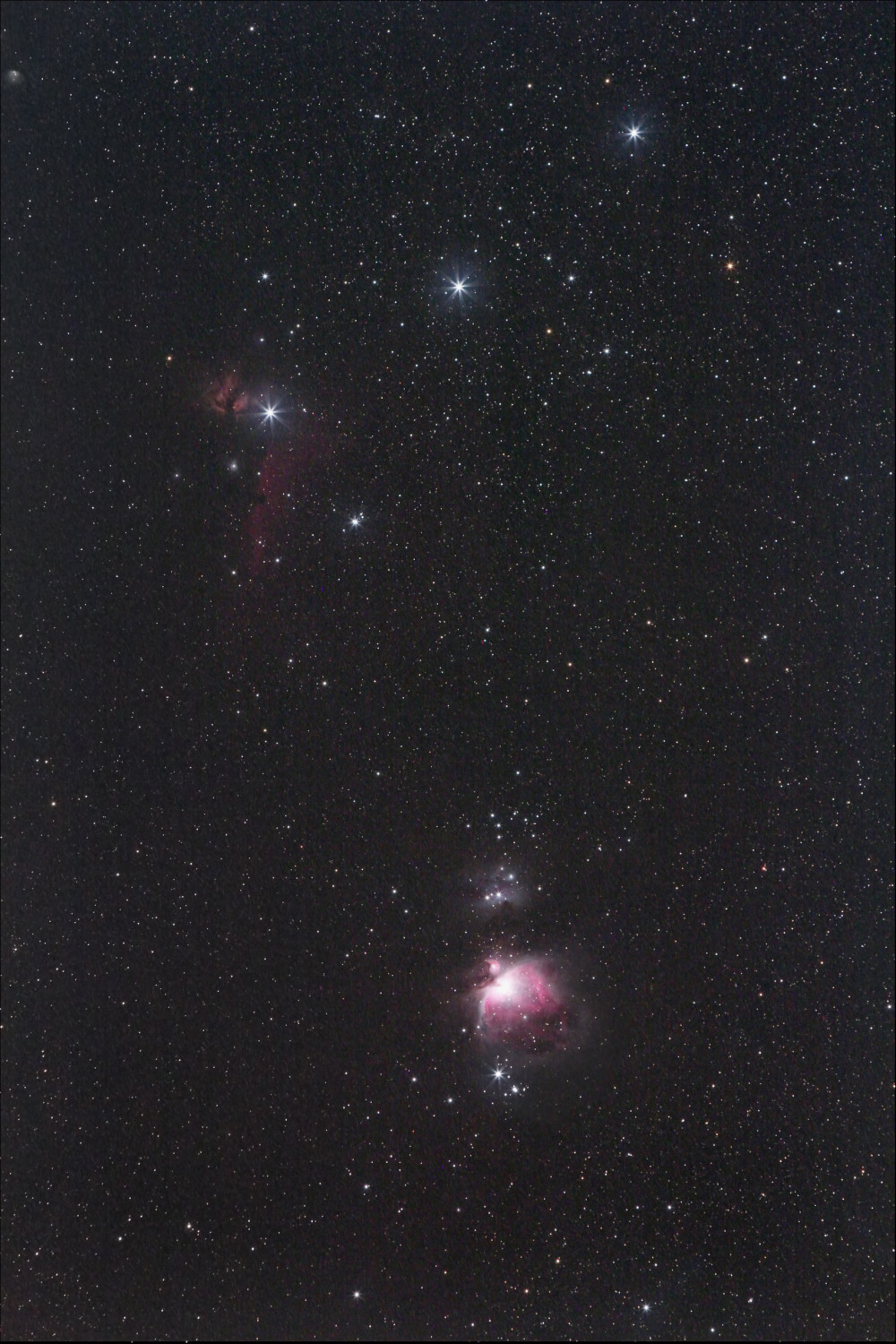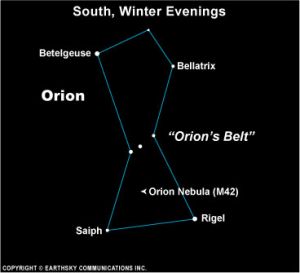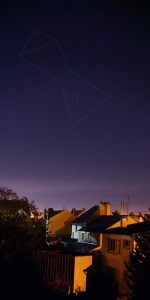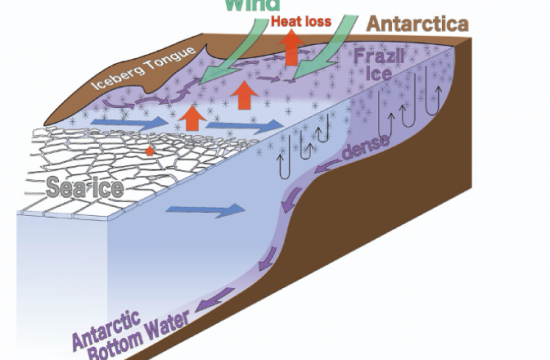
Most of the people are familiar with Orion, the most noticeable of all constellations. Among the constituent stars of Orion Nebula the belt stars are the most brightest and easily noticeable stars where Orion’s two brightest stars, Betelgeuse and Rigel are two of the brightest stars in the sky as well. Once the belt stars are found then the Orion Nebula can also be located easily. Orion Nebula is also known as M42, a stellar nursery where new stars are being born.
How to locate the Orion Nebula.
 In order to find this famous Nebula, first the constellation Orion should be located which is not so difficult if observed at the right time of year. The Northern Hemisphere winter months (Southern Hemisphere summer months) are the perfect time to come to know Orion. The constellation is noticeable for three medium-bright stars in a short, straight row. These stars represent Orion’s Belt.
In order to find this famous Nebula, first the constellation Orion should be located which is not so difficult if observed at the right time of year. The Northern Hemisphere winter months (Southern Hemisphere summer months) are the perfect time to come to know Orion. The constellation is noticeable for three medium-bright stars in a short, straight row. These stars represent Orion’s Belt.
If the stars are observed closely, a curved line of stars “hanging” from the three Belt stars can be noticed. These stars represent Orion’s Sword. The Orion Nebula can be observed about midway down in the Sword of Orion.
As a general rule, the higher the constellation Orion is in the sky, the easier it is to see the Orion Nebula. Orion is due south and highest in the sky around midnight in middle December. The stars return to the same place in the sky some 4 minutes earlier each night, or 2 hours earlier each month. So observation for Orion is better at highest up around 10 p.m. in mid-January and 8 p.m. in mid-February.

Another time people notice Orion is around the months of August and September, when this constellation appears in the east before dawn.
Most nebulae – clouds of interstellar gas and dust – are difficult if not impossible to see with the unaided eye or even binoculars. But the Orion Nebula is in a class nearly all by itself. It’s visible to the unaided eye on a dark, moonless night. To me, it looks like a star encased in a globe of luminescent fog. The dark-sky aficionado Stephen James O’Meara described it as:
… angel’s breath against a frosted sky.
In a dark country sky, observing the Orion Nebula for yourself to see what it looks like is like a backyard telescope, or even binoculars wondering to showcase one of the greatest celestial treasures in the winter sky.
What science says about the Orion Nebula.
According to modern astronomers, the Orion Nebula is an enormous cloud of gas and dust, one of many in our Milky Way galaxy. It lies roughly 1,300 light-years from Earth.
At some 30 to 40 light-years in diameter, this great big nebulous cocoon is giving birth to perhaps a thousand stars. A young open star cluster, whose stars were born at the same time from a portion of the nebula and are still loosely bound by gravity, can be seen within the nebula. It is sometimes called the Orion Nebula Star Cluster. In 2012, an international team of astronomers suggested this cluster in the Orion Nebula might have a black hole at its heart.
The four brightest stars in the Orion Nebula can be seen through amateur astronomers’ telescopes and are affectionately known as The Trapezium. The light of the young, hot Trapezium stars illuminate the Orion Nebula. These stars are only a million or so years old – mere babes in the lifetime of a star.
But most of the stars in this emerging cluster are veiled behind the Orion Nebula itself, the great stellar nursery in Orion’s Sword.
Orion Nebula’s position is Right Ascension: 5h 35.4m; Declination: 5o 27′ south







